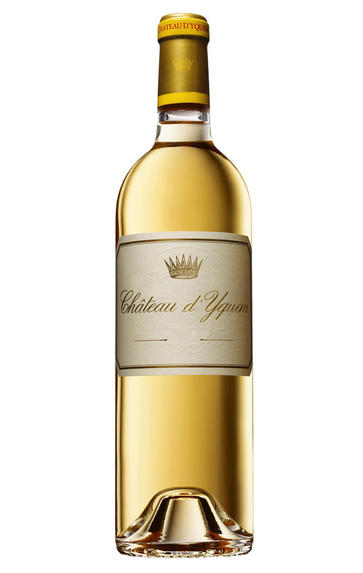
2020 Château d'Yquem, Sauternes, Bordeaux
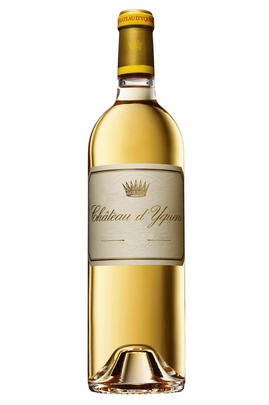
Critics reviews
The 2020 Château d'Yquem a blend of 75% Sémillon and 25% Sauvignon Blanc. It has 135 grams per litre of residual sugar and a pH of 3.79. Pale lemon-gold coloured, citrus and baking spice notes emerge slowly from the glass, rising to offer well-defined scents of candied ginger, orange blossoms, allspice, and almond tart, leading to a flamboyant core of peach cobbler, ripe, juicy pineapple, jasmine tea, and apple butter with a waft of saffron.
The palate is full-bodied and characteristically rich yet possesses impressive tension and therefore stunning harmony. Layers of exotic spices and fragrant white flower accents fill the palate, leading to a long finish with lingering chalk and mineral nuances. It’s a showy Yquem that is gregarious in youth but is reserving that extra something for those with the patience to wait twenty years or more.
Lisa Perrotti-Brown, The Wine Independent (February 2023)
About this WINE
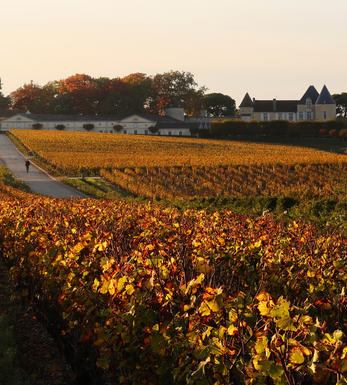
Château d’Yquem
Château d’Yquem is the leading estate in the Sauternes appellation on the Left Bank of Bordeaux. It has long been reputed for making one of the world’s great sweet wines. In the 1855 classification of Bordeaux wines, Yquem was given the lofty title of Premier Cru Supérieur – the sole property at that level. It sits comfortably among the First Growths of the Médoc and their equivalents on the Right Bank regarding its quality and prestige among wine collectors.
The estate has a noble history dating back to the 1590s. By 1711, it was owned by the Sauvage family, French aristocrats whose descendants would remain at the helm for almost three centuries. Yquem is now part of the Louis Vuitton Moët-Hennessy (LVMH) group, owned by Bernard Arnault, one of France’s wealthiest people.
Yquem is located in the heart of Sauternes, at the commune’s highest point and surrounded by many of the appellation’s other leading estates. The vineyard is planted to a majority of Sémillon, supported by Sauvignon Blanc. There are 113 hectares of vines, though only 100 hectares are used in any one vintage.
To make a bottle of Yquem depends on developing botrytis cinerea, the so-called “noble rot”, in the vineyard. Harvest involves up to 200 workers, passing through the vineyard up to 10 times to pick only those berries that have been infected with noble rot. This doesn’t happen uniformly, and it doesn’t happen every year. In some years, no Yquem is produced at all – as in 1964 or, most recently, 2012. Of this approach, President Pierre Lurton says: “It’s important to take a lot of risk. If you don’t take a risk, you don’t make Yquem.”
Today, Yquem is led by Pierre Lurton, its longtime President, along with Estate Manager Lorenzo Pasquini. The Cellar Master is Toni El Khawand, following the departure of Sandrine Garbay in 2022.
In addition to the sweet Sauternes produced here, there is also a dry white wine, Y (pronounced “ee-greck”).
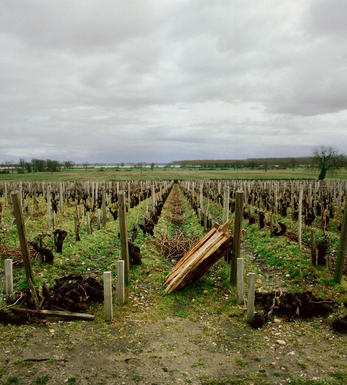
Sauternes
Sauternes is where arguably the world's finest sweet white wines are produced. The Sauternes appellation actually consists of five communes: Barsac, Preignac, Bommes, Fargues and Sauternes itself. Barsac is also an appellation in its own right.
Sauternes literally has an atmosphere different from any of the other major communes. At the southern tip of the Graves,close to the Garonne, not only is the land hillier and decidedly more bucolic but it also enjoys a specific mesoclimate of evening autumn mists which linger until well into the following day, unless burnt off by warm sunshine.
The mists are caused by the cool, spring-fed waters of the Ciron River meeting the warmer tidal Garonne, and the result is an ideal environment for the growth of the mould botrytis cinerea. When its arrival is felicitous, it feeds on the water in the ripe grapes, dehydrating them and leaving sweet, shriveled fruit.Other regions in Bordeaux (ie Cadillac, Loupiac) produce wines in a similar style from the same method, but none achieve the profundity and complexity of Sauternes.
Recommended Châteaux : Ch. D'Yquem, Ch. Climens (Barsac), Ch. Suduiraut, Ch. Rieussec, Sigalas- Rabaud, Ch. Coutet (Barsac), Ch. de Fargues, Ch. Lafaurie-Peyraguey, Ch. Doisy-Védrines (Barsac), Chateau Partarrieu, La Tour Blanche
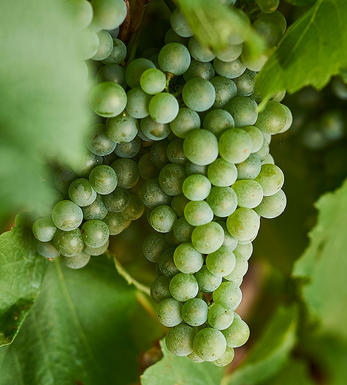
Sauvignon Blanc & Sémillon
The blend used for White Graves and Sauternes and rarely encountered outside France. In the great dry whites of Graves, Sauvignon Blanc tends to predominate in the blend, although properties such as Smith Haut Lafite use 100% Sauvignon Blanc while others such as Laville Haut Brion have as much as 60% Sémillon in their final blends. Sauvignon Blanc wines can lose their freshness and fruit after a couple of years in bottle - if blended with Sémillon, then the latter bolsters the wine when the initial fruit from the Sauvignon fades. Ultimately Sauvignon Blanc gives the wine its aroma and raciness while Sémillon gives it backbone and longevity.
In Sauternes, Sémillon is dominant, with Sauvignon Blanc playing a supporting role - it is generally harvested about 10 days before Sémillon and the botrytis concentrates its sweetness and dampens Sauvignon Blanc`s naturally pungent aroma. It contributes acidity, zip and freshness to Sauternes and is an important component of the blend.


Buying options
Add to wishlist
Description
The 2020 vintage of Château d’Yquem is the start of a wonderful wine journey. While aged Sauternes is much-coveted, it’s easy to forget the deliciousness of Ch. d’Yquem at the start of its life. The 2020 vintage started well, but the lack of rainfall during the summer caused havoc across 105 hectares of Ch. d’Yquem.
However, in typical fashion, they overcame this challenge to produce more than a drop of decadence. With notes of apricot and mandarin, which are accompanied by lip-smacking acidity, this is a delight. My advice would be to buy a case or two, and watch this develop over the decades.
Drink 2024 – 2080
Markus Ljunghammar, Account Manager, Berry Bros. & Rudd (March 2023)
wine at a glance
Delivery and quality guarantee